
Samurai Exhibition Header Image
 |
Samurai Exhibition Header Image |
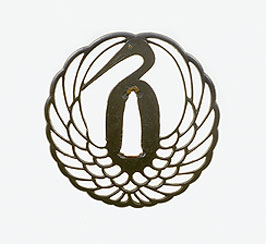 |
| A peace-time Tsuba, virtually useless in battle and clearly ornamental only. |
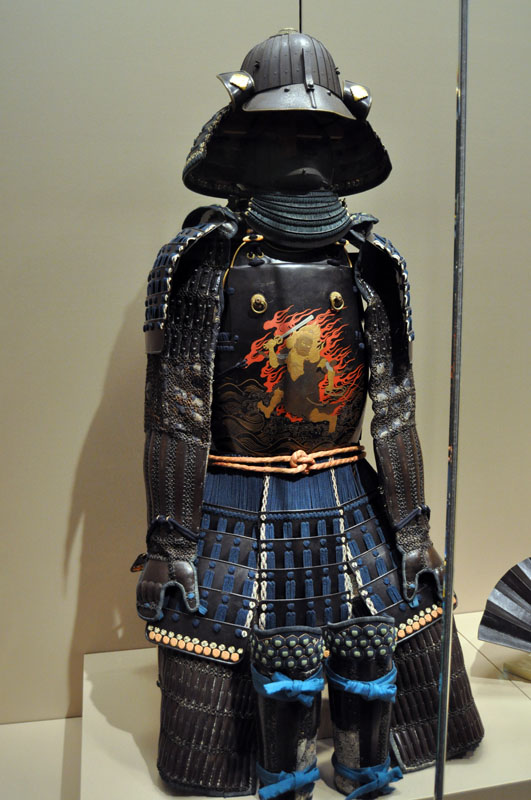 |
 |
 |
| Tamonten: God of War and good fortune - the most powerful of the Buddhist kings and the protector of the four directions of the compass |
 |
| The armor is metal, covered in laquer or leather. Initially made of heavy plate for mounted samurai, but changes in warfare required to keep mobility high and the armor flexible and light, but functional. The armor evolved to this lighter and more segmented form. Some armors were peace-time works of art and mainly ornamental. |
 |
| A fine set of swords, a katana (long) and wakizashi (short) sword, without fittings. You can clearly see the wavy 'hamon' in the short sword. It is an effect that comes from the differential hardening of the blade. The edge is hard, while the back is softer and flexible to handle impact shock better. |
 |
Iron tsubas, sword hand guards, each one unique and meaningful to the owner of the swords |
 |
Bronze-age swords from long before the age of the Samurai, but already utilize the circular hand guard. The scabbards are only place holders for what were once bronze bands around wood sheaths. |
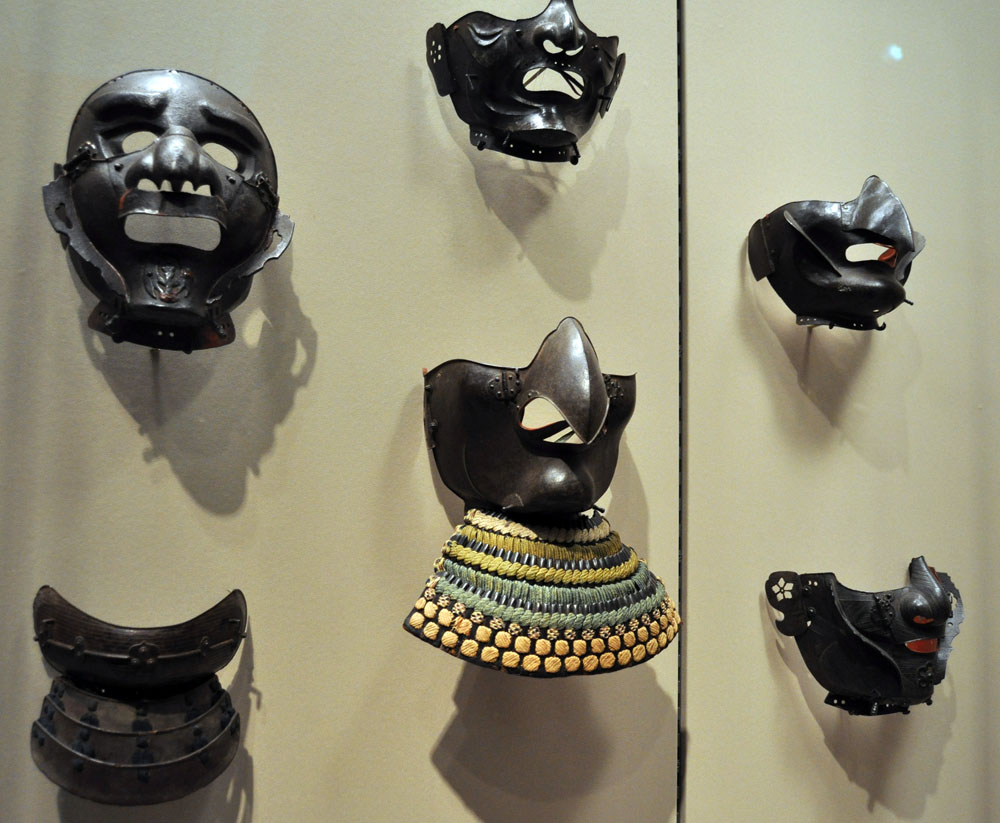 |
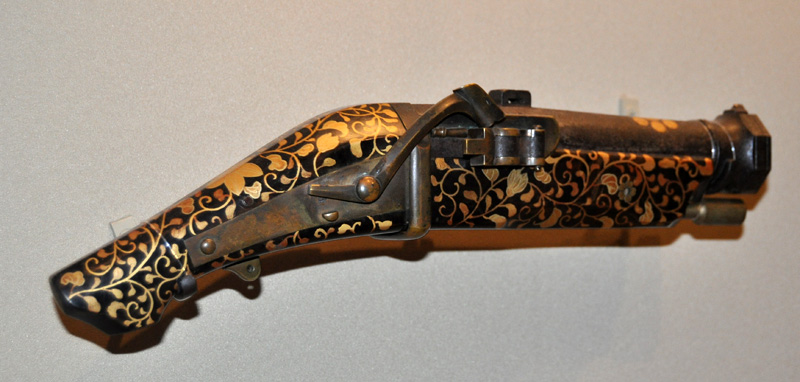 |
| Teppo, guns, were introduced by the Dutch and Portugese and artfully copied by Japanese gunsmiths, and by the end of the 16th century, there were more guns in Japan than in any European nation. |
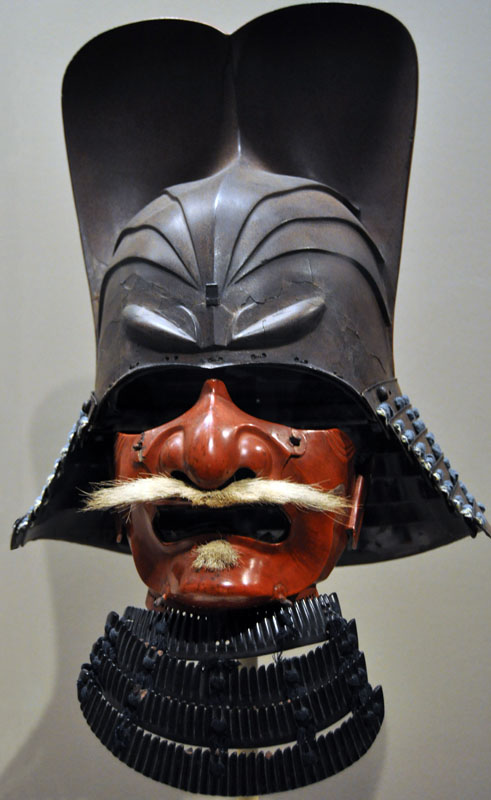 |
The SF Asian Art Museum